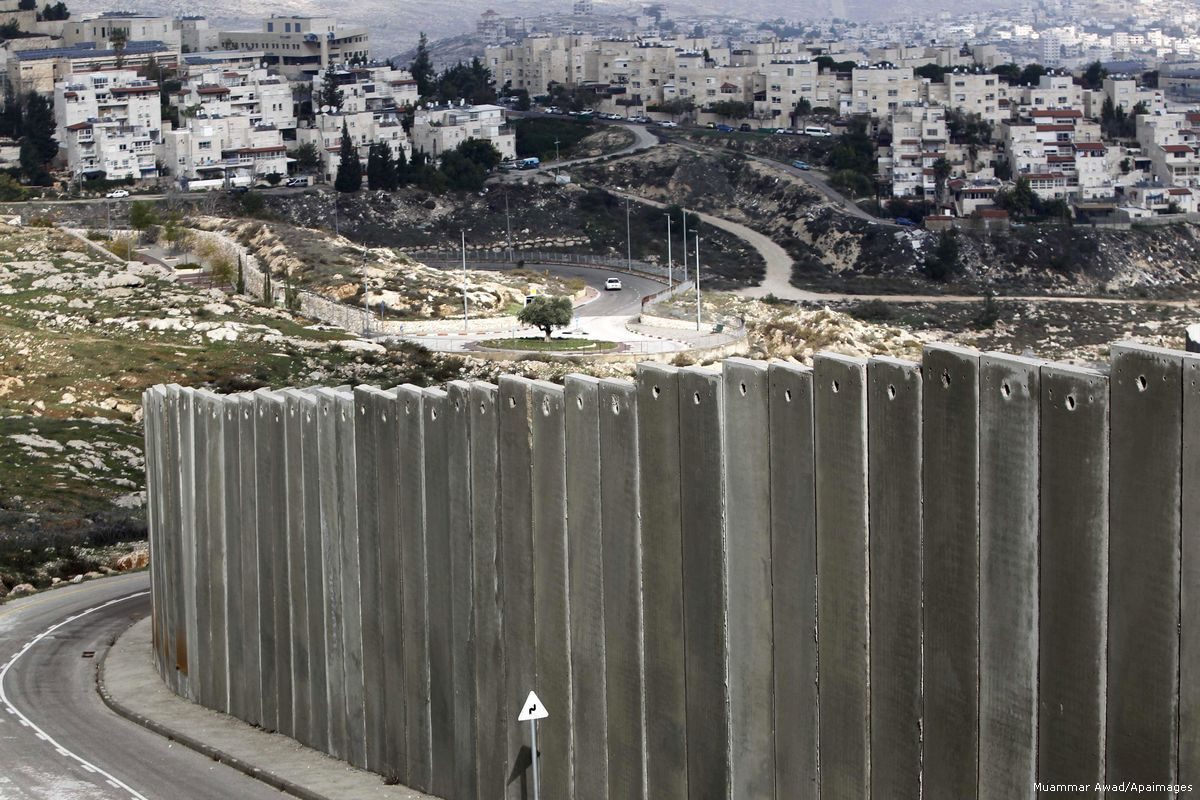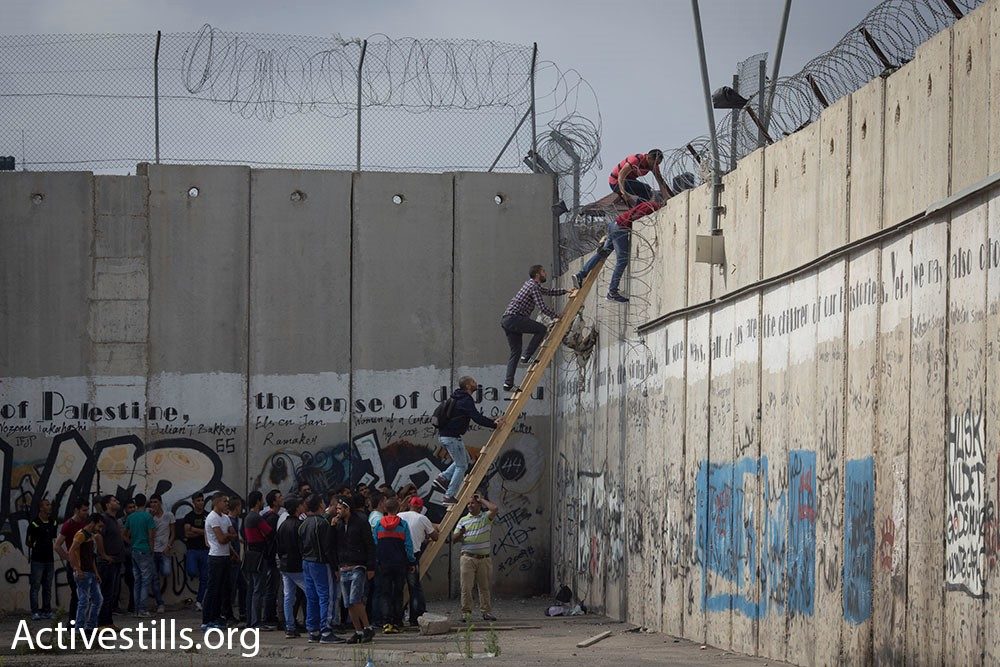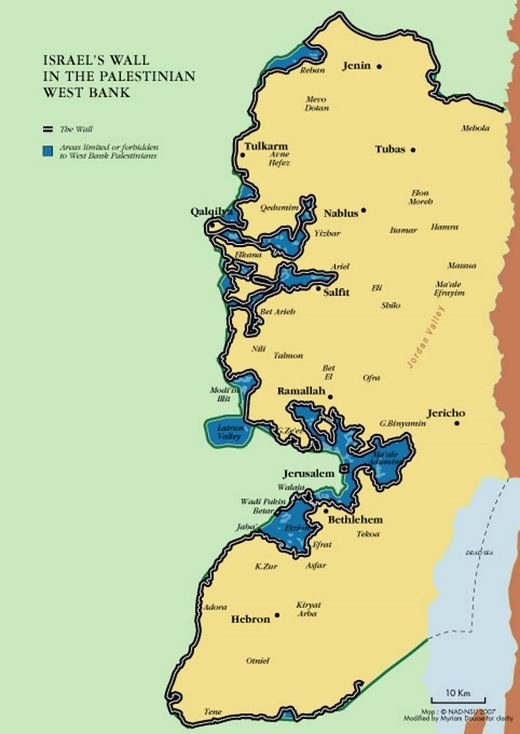Israel began construction of the separation wall, known by many as the Israeli "Apartheid Wall", in 2002 in the middle of the Second Intifada. Israeli officials said the wall was a necessary "security precaution against terrorism" from Palestinian attackers coming from the West Bank.
But with the construction of the wall, came unprecedented demolitions of Palestinians homes along the planned route, massive land confiscations, and the division of dozens of Palestinian communities along the Green Line.
In 2004 the ICJ issued a non-binding advisory opinion that Israel should immediately stop construction on the wall, and should pay reparations for any damage caused.
While the court recognized that Israel was facing acts of violence against its civilians, it said that the Israeli government was violating its responsibilities under international law as the occupying power of the Palestinian territory.
After one year of inaction by Israeli authorities following the ICJ decision, Palestinian activists launched the now infamous Boycott, Divestment, and Sanctions (BDS) movement, known as the BDS Call, on July 9, 2005.
In an interview with the Guardian last year, Ingrid Jaradat, one of the founding members of BDS, said "If there had been action on the part of the international community to implement the ICJ ruling, there wouldn't have been a BDS call."
Fifteen years on, despite the court's ruling and widespread international criticism of the wall, and it continues to be built across the West Bank, tearing communities apart and separating Palestinians from their land.
The immeasurable impact of the wall
In the years since the construction of the wall, which stands at 26ft at its highest points — more than double the height of the Berlin Wall — Palestinians in the West Bank have relentlessly protested against its construction, arguing that it seeks to annex Palestinian land under the guise of security.

The route of the wall, including planned sections, sections under construction, and those already built, spans 712 kilometers — more than twice the length of the Green Line, which is 320 kilometers long.
According to Israeli human rights organization B'Tselem, 85% of the barrier runs inside West Bank territory, and has paved the way for the Israeli takeover of 10% of the West Bank.
"If construction is completed along the entire planned route, 52,667.7 hectares of land - an area that is equal to 9.4% of the West Bank and includes the territories that Israel annexed to the municipal boundaries of Jerusalem - will be cut off from the West Bank," the group said.
When the wall was built, B'Tselem said, it cut off around 150 Palestinian families from their land, and isolated some 11,000 Palestinians living in 32 communities caught in seam zones between the wall and the Green Line. It has completely sealed Palestinians in East Jerusalem from their surrounding communities in the West Bank, and vice versa.
Severely restricting the movement of millions of West Bank Palestinians, the wall has further entrenched Israel's permit regime, forcing any Palestinian who wants to cross into Jerusalem or Israel for work, medical reasons, or even visiting family on the other side of the wall to apply for an Israeli permit first — the large portion of which are denied for "security reasons."
B'Tselem:
The construction of the barrier within the West Bank has violated multiple human rights of the Palestinians who live on either side of it. Among other things, it curtails their freedom of movement, consequently impinging upon their rights to work, education, medical care, family life, earning a living and an adequate standard of living. The Palestinians' collective right to self-determination is also violated, as the winding route of the barrier cuts into Palestinian space and breaks up the population living there.





Comment:
- Israel's new 'Apartheid Road' separates Palestinian and Israeli drivers with 8-meter wall in West Bank - UPDATE
- Israel pushing to legalize West Bank settlements as Trump arrives in Tel Aviv
- Israel "remaps" West Bank area to steal more land for illegal settlements
- Razing Palestine: Palestinian forced to demolish his own shop in occupied East Jerusalem
- Deputy defense minister claims Israel can annex West Bank and still not give Palestinians right to vote
- Democracy: Israel delivers eviction orders to villagers in Negev desert despite the fact they are Israeli citizens
- Israel to cut off Palestinian access to spring, steal more land, by moving checkpoint deeper into West Bank
Israel has rightly intuited that though it may be criticized, no government will take steps to rein it in, while it enjoys the protection of the US. It has therefore set its sights further afield:Israel begins home demolitions in Golan Heights, plotting illegal annexation of Syrian territory